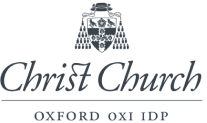We spoke with Mark Hook, Website Manager at Christ Church, Oxford, about his experience of leaving Silktide, trying to migrate a website with an alternative product, and determining why it was better for the College to return.
Can you tell us more about your role and responsibilities at Christ Church?
Christ Church is one of the largest Colleges of Oxford University, strongly committed to teaching and research. Christ Church has a distinguished history and is unique among Oxford colleges in that it also contains the Cathedral of the Oxford diocese, which doubles as the college chapel. Christ Church as a heritage site is a popular visitor attraction and is exclusive among the Oxford and Cambridge colleges in possessing an important collection of Old Master paintings and drawings housed in the purpose-built Picture Gallery.
My role is Website Manager, part of a Communications Team of three at Christ Church and my main responsibility is to maintain and develop the website, and an intranet so that we can effectively communicate with our audiences, staff, and students.
I am also responsible for monitoring and improving website accessibility and enhancing the user experience as well as training and supporting around 30 editors across the organization all of whom work in a variety of roles but also update the website and intranet on behalf of their departments and their specific audiences as one aspect of their jobs.
Given the complexity of the organization our target audiences are many, they include prospective students, researchers and academics, alumni, congregants, and others who may wish to use the Cathedral, as well as tourists who wish to visit the College buildings and estate.
Why did you make the decision to leave Silktide, and then return?
Having used Silktide successfully for 2 years we made the decision to move to an alternative provider at a time when we were embarking on a new website build, largely because at that time the other provider offered heat-mapping of pages showing content interactions via clicks and scrolling, these facilities were felt to be vital in enabling us to better understand how our users were interacting with our content before we made decisions about which parts of it to migrate, and how to restructure our new site.
This was before the release of Silktide Analytics.
Once Silktide was in a position to offer us their cookie-free analytics and heatmapping solution, we made the easy decision to swap back. The primary reason for returning to Silktide is the user interface which is straightforward and user friendly for technical and non-technical users alike. The alternative provider offered a good suite of tools but via an interface that was far from intuitive or easy for the non-specialist to interact with, meaning it couldn’t be effectively shared with colleagues across the organization.
Once we returned to Silktide I was much more easily able to share reports of page usage directly with departmental heads and their teams so they could see for themselves exactly which parts of their pages their users were engaging with. These colleagues needed only brief introductions to the interface in order to use the software for themselves and investigate the reports generated by the Silktide software. This, in turn, gave them valuable insights into which material their audiences were engaging with, and what could be more usefully re-written, or presented entirely differently moving forward.
Website relaunch
The value to me of having Silktide installed is reassurance and confidence in the accessibility of the pages we are building. At whatever part of the process we find ourselves re-building a section of the site or further developing the site’s functionality, I can get instant checks completed on new pages to ensure we have not created a challenge in any area of accessibility, or overlooked even the tiniest of details which might make a page less usable for any segment of our audiences.
Better still, because the reports run regularly, I can rely on Silktide to keep us on top of quality issues like broken links, spelling or grammar errors, GDPR data integrity, and many similar things that concern those of us running complex institutional websites. I can share those reports directly with the editors across the College and they can see first-hand what needs to be addressed, meaning the maintenance burden does not all fall entirely on our team.
I am very pleased that we have launched our new website with an 81% accessibility rating, and that I can immediately see what we need to tackle, presented to me in a prioritized list, in order to push that rating higher still.
What’s your advice to other people who might be considering using Silktide?
If you are considering Silktide my advice would be to ask for a demo and see what the tools and interface are like to use. Have a go at using it for yourself so you can determine how clear and intuitive you find the reports and the recommendations. To my mind this has always been Silktide’s strongest asset, the interface is user-friendly whatever your level of understanding, and the steps to dig deeper into issues and start to discover what you need to do in order to resolve them are well presented, allowing you to grow your understanding as you use the software. My experience with Silktide Support has always been excellent, quick to respond, friendly, helpful, and able to resolve my questions effectively.
For peace of mind in regards to accessibility Silktide is worth the investment. The fact that I can also spread the workload of managing the regular maintenance by sharing the tool so readily with other users eases the impact on our team and helps those contributors to gain a better understanding of how best to present their content and develop their pages, all of which helps the audiences get a better web experience on our site.
Ready to get started?
Request a demo
